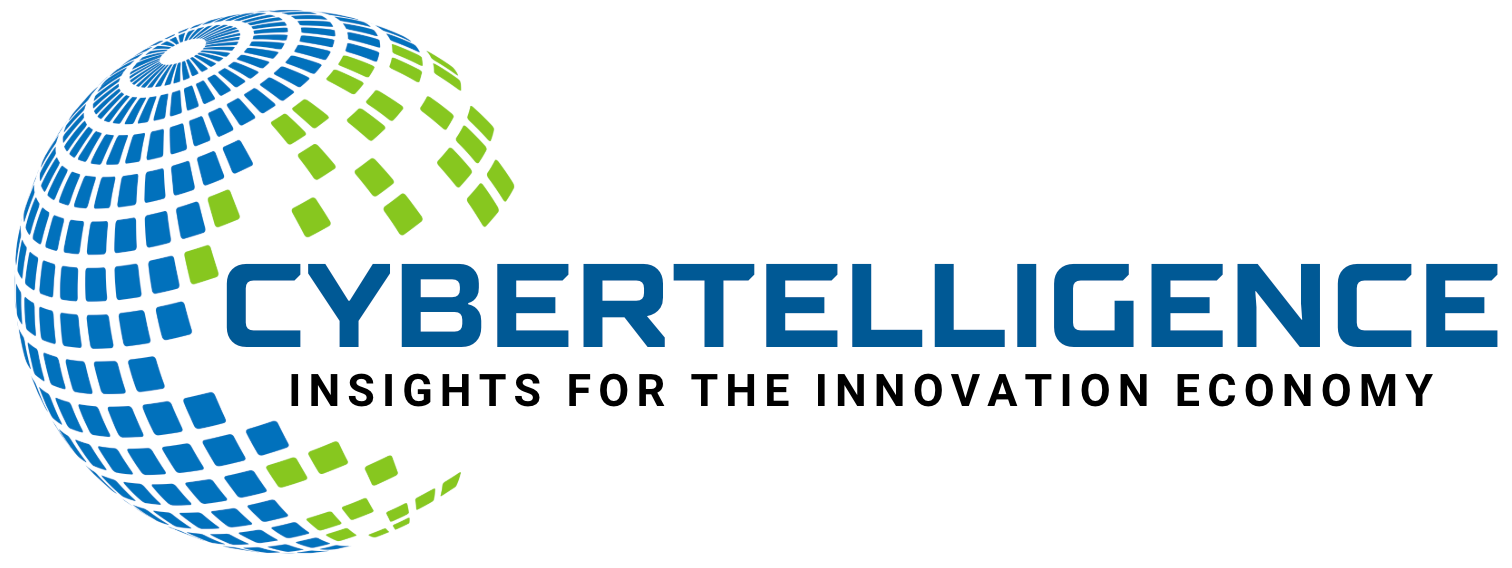AI News: GPT-5 Release Update, Google and Microsoft Go All In on New Vibe Coding & More
In the rapidly evolving world of artificial intelligence, staying ahead means staying informed. From the much-anticipated GPT-5 release to…

In the rapidly evolving world of artificial intelligence, staying ahead means staying informed. From the much-anticipated GPT-5 release to groundbreaking developments in vibe coding by tech giants Google and Microsoft, and the controversial White House AI Action Plan, this article cuts through the noise to deliver the AI news that truly matters for businesses and professionals alike.
Let’s dive into the key updates shaping the AI landscape as of late July, providing you with a clear picture of what’s next and what you need to watch.
Table of Contents
- GPT-5: The Next Leap in AI Intelligence
- Google and Microsoft Double Down on Vibe Coding
- NVIDIA Chips Flood China Despite US Export Ban
- The White House AI Action Plan: Bold, Controversial, and Politically Charged
- Google’s Push for News Licensing Amid Search Traffic Decline
- Microsoft Brings Back Clippy — Sort Of — with AI-Powered Copilot Avatar
- Netflix’s First Use of Generative AI in Visual Effects
- AI-Driven Fraud Crisis: A Looming Threat
- Quick Recap: What’s New and What’s Next
GPT-5: The Next Leap in AI Intelligence
The buzz around GPT-5 has officially shifted from speculation to reality. According to reports from The Verge and confirmed by OpenAI CEO Sam Altman, the next-generation GPT-5 language model is expected to launch as early as August. This early release surprises many, arriving ahead of previous expectations and before the anticipated debut of OpenAI’s open language model.
Altman described GPT-5 as a “here it is” moment in artificial general intelligence (AGI), highlighting the model’s advanced reasoning capabilities. In fact, GPT-5 reportedly demonstrated the ability to instantly answer a question that even Altman himself could not, based on his own personal context — a significant leap in problem-solving power.
Key features of GPT-5 include mini and nano versions accessible through OpenAI’s API, aiming to broaden reach to developers and businesses alike. The model is set to integrate OpenAI’s “o3 reasoning” capabilities initially planned for a separate release, streamlining the company’s product lineup.
Interestingly, Microsoft’s Copilot is preparing for GPT-5 integration, with evidence of server capacity upgrades and model selectors surfacing in web versions. Meanwhile, evaluation platforms like LM Arena have seen code-named models such as Summit, Zenith, and Starfish appearing and disappearing, hinting at active development and testing phases.
This release is particularly significant because GPT-4 technology has been dominant for over two years. However, Google’s Gemini 2.5 Pro has been gaining ground recently in reasoning benchmarks, possibly pushing OpenAI to accelerate GPT-5’s rollout to maintain its edge in the AI race.
Google and Microsoft Double Down on Vibe Coding
Google’s Opal: Democratizing App Development
Google has launched Opal, an AI-powered tool that enables users to build web apps from simple text prompts — no coding experience required. Available through Google Labs in the U.S., Opal lets users describe their desired app in natural language, then generates the app using Google’s AI models. Further customization is possible via a visual workflow editor, and users can publish and share their apps online, leveraging their own Google Gemini accounts for access.
This move signals Google’s push to make app development accessible to non-technical audiences, placing it in direct competition with no-code and low-code platforms like Cursor, Lovable, Canva’s AI app maker, Figma, and Replit.
A noteworthy aspect is Opal’s integration with Google Gemini’s AI capabilities, which had been quietly available as a “wand” feature in Gemini for over a month. Opal now brings this functionality fully into the spotlight, offering an easy pathway from idea to functional app.
Microsoft’s GitHub Spark: AI-Powered Full-Stack Development
Following Google’s lead, Microsoft-owned GitHub has introduced GitHub Spark, a public preview AI feature that transforms natural language ideas into full-stack applications within minutes. Currently available to GitHub Copilot Pro Plus subscribers, Spark offers up to 375 messages per month and supports up to ten active app-building sessions simultaneously.
Spark leverages Anthropic’s Claude SONNET 4 model and combines natural language input with a visual editing environment. Users can publish apps directly to new GitHub repositories with a single click, streamlining the deployment process.
While Microsoft’s offering is currently behind a paywall, it’s expected to become available to a broader audience soon. Between GitHub’s developer-centric ecosystem and Microsoft’s enterprise reach, Spark is well-positioned, though Google’s free or low-cost Opal may appeal more to casual or less technical users.
NVIDIA Chips Flood China Despite US Export Ban
In a revealing report from the Financial Times, it’s estimated that over $1 billion worth of banned NVIDIA AI chips, including the powerful B200 GPUs, have been shipped to China since the U.S. tightened export restrictions in April.
These chips, banned for export to China, have nonetheless been accessible through secondary black markets and global trade loopholes. Prices in China for NVIDIA’s B200 GPUs are reportedly up to 50% higher than in the U.S., creating lucrative opportunities for resellers.
NVIDIA CEO Jensen Huang and former U.S. Commerce Secretary Gina Raimondo have expressed skepticism about the effectiveness of export controls, warning that restrictions might accelerate China’s domestic AI hardware development. U.S. authorities are urging allies to crack down on smuggling, but so far, enforcement has been limited.
The White House AI Action Plan: Bold, Controversial, and Politically Charged
The Trump administration has unveiled a sweeping AI action plan encompassing over ninety government initiatives aimed at accelerating U.S. AI innovation, infrastructure, and international leadership. The plan is structured around three pillars often referred to as the “three I’s”: Innovation, Infrastructure, and International Leadership.
Key elements include:
- Updating federal procurement rules to require agencies to purchase only “ideologically neutral” AI systems.
- Removing regulatory barriers to AI development and limiting federal funding to states that enact their own AI regulations.
- An executive order targeting what is dubbed “woke AI,” mandating unbiased AI use and removing references to misinformation, diversity, equity, inclusion (DEI), and climate change from federal AI guidelines.
This approach has sparked criticism from civil society groups for potentially penalizing states that pursue responsible AI regulation and for dictating what constitutes “truthful” AI. Legal challenges and political infighting, particularly among Republican-led states, are expected as the federal government wields funding as leverage to enforce compliance.
Google’s Push for News Licensing Amid Search Traffic Decline
Google has begun reaching out to over twenty national news outlets to establish licensing deals for training its AI models. This marks a strategic shift as Google’s share of global search traffic has dropped below 90% in six of the past seven months — a decline not seen in over a decade, attributed largely to the rise of AI-powered chat search engines like ChatGPT and Perplexity.
Publishers have raised concerns that Google’s AI-generated news summaries reduce organic traffic by up to 60%, as users obtain information without clicking through to original sites. Data from Pew Research supports this trend, showing AI summaries receive roughly half the click-through rate of traditional search links.
Previously, Google’s major licensing deals included partnerships with the Associated Press and Reddit. Competitors like OpenAI and Perplexity have secured agreements with various publishers, including Conde Nast, The Atlantic, LA Times, and The Independent. Google’s renewed licensing efforts signal an attempt to repair relationships critical to the future of AI-powered search and content generation.
Microsoft Brings Back Clippy — Sort Of — with AI-Powered Copilot Avatar
In a nostalgic yet modern twist, Microsoft has introduced a visual avatar for its Copilot AI chatbot, featuring real-time facial expressions, gestures, and conversational memory. This “Copilot Appearance” is currently available as an early preview in Copilot Labs on the web, primarily in the U.S., UK, and Canada.
Users can activate the avatar via voice mode, where the AI responds with smiles, nods, and other nonverbal cues to foster a more natural and engaging interaction. The feature aims to give Copilot a lasting identity and personality, reminiscent of the beloved (and sometimes criticized) Clippy assistant from Microsoft Office days past.
While some users may appreciate the added personality, others prefer direct and efficient responses without the embellishment. The rollout and user reception will determine if this approach gains traction going forward.
Netflix’s First Use of Generative AI in Visual Effects
Netflix has officially used generative AI for the first time in one of its blockbuster original scripted series, El Eternauta, an Argentine science fiction show. AI tools helped create a complex building collapse sequence in Buenos Aires, completing the visual effects ten times faster than traditional methods.
The series featured approximately 2,000 virtual effects shots, drawing positive attention for its high-quality visuals. Netflix emphasizes AI’s role in lowering costs, speeding production, and democratizing advanced effects like de-aging for creators beyond big-budget projects.
However, the use of AI in film and television remains controversial due to concerns about job security for artists and the artistic integrity of AI-generated content. Other streaming platforms, such as Amazon, are also experimenting with AI for content recommendations, recaps, and voice debugging.
AI-Driven Fraud Crisis: A Looming Threat
OpenAI CEO Sam Altman recently issued a stark warning about an impending crisis in AI-driven fraud and impersonation. Speaking at a Federal Reserve event, Altman highlighted that AI has already overcome most current authentication methods except passwords, calling it “crazy” that financial institutions still rely on voice authentication, given how easily AI can clone voices.
Scams using AI-generated voice and video impersonations are already targeting individuals, including parents and high-level government officials. The FBI has issued cautions about such threats, with reports of AI cloning attempts impersonating politicians like Senator Marco Rubio.
OpenAI is expanding its policy efforts by opening a Washington D.C. office to work with the federal government, train officials, and research AI’s economic impacts. Despite these risks, Altman has also urged the administration to avoid regulations that could hinder U.S. companies’ global competitiveness, particularly against China.
This dual narrative — warning of fraud while resisting heavy regulation — reflects the complex balance between innovation and security in today’s AI race.
Quick Recap: What’s New and What’s Next
- OpenAI is poised to launch GPT-5 in early August, promising advanced reasoning and new model variants.
- Google’s Opal and Microsoft’s GitHub Spark bring AI-powered vibe coding to users, simplifying app creation with natural language prompts.
- NVIDIA AI chips continue to flow into China despite U.S. bans, fueling a black market.
- The White House AI Action Plan introduces sweeping initiatives focused on deregulation, ideological neutrality, and federal funding control, sparking political and legal debates.
- Google is pursuing new licensing deals with publishers amid declining search traffic due to AI chat engines.
- Microsoft revives a Clippy-like AI avatar for Copilot, aiming to humanize digital assistants.
- Netflix uses generative AI to accelerate and enhance visual effects production in its original series.
- Sam Altman warns of an AI-driven fraud crisis, emphasizing the urgent need for improved security measures.
As AI continues to reshape industries, staying informed on these developments is crucial for businesses and professionals who want to leverage AI for growth and innovation. Whether it’s the imminent arrival of GPT-5, the democratization of coding with vibe coding tools, or navigating the political and security challenges posed by AI, the landscape is evolving fast — and those who adapt will lead the way.
For ongoing insights and practical AI applications, consider subscribing to trusted AI newsletters and following expert commentary to keep your edge in this transformative era.
Unlock More AI Tools for Your Business & Life
Ready to discover even more powerful AI solutions & secure exclusive deals on cutting-edge AI tools that can transform the way you work and live.
Don’t miss out — boost your productivity and creativity today!
Click Here To Explore Top AI Tools
This article was inspired by insights from the original video available at: GPT-5 release timeline update, Google and Microsoft go all in on new vibe coding, and more




